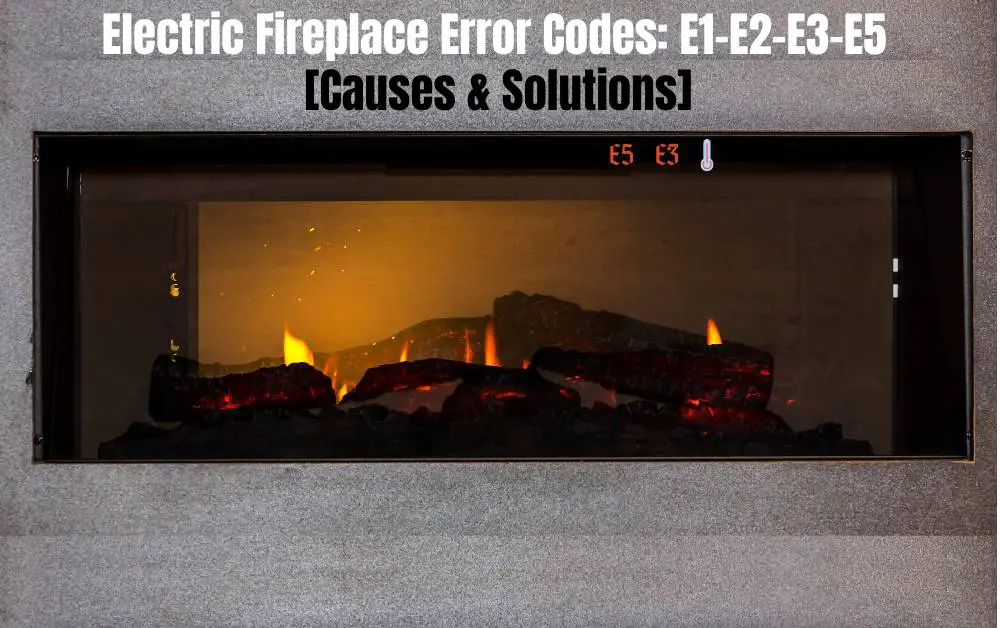In the ever-evolving landscape of home design and comfort, electric fireplaces have become popular for those seeking warmth and ambiance without the hassle of traditional wood-burning alternatives. As we delve into these modern heating solutions, one crucial aspect often overlooked is the electric fireplace power requirements.
Understanding the electrical needs of these sleek and efficient appliances is paramount for homeowners looking to integrate them into their living spaces seamlessly.
Overview
Electric fireplaces draw power from standard household outlets, usually rated at 120 volts. The wattage can vary depending on the size and features of the fireplace, ranging from 750 to 1500 watts for most residential models. Some electric fireplaces come with adjustable heat settings, allowing users to customize the warmth produced, which can be particularly energy-efficient.
Electric Fireplace Power Requirements
Standard Electric Fireplaces
Voltage: Most electric fireplaces for residential use operate on a standard household electrical circuit of 120 volts. However, some larger or more powerful models may require a 240-volt circuit.
Wattage: The power consumption of standard electric fireplaces typically ranges from 750 to 1500 watts. The higher the wattage, the more heat the fireplace can produce.
Voltage and Amperage
Voltage Requirements: Verify the voltage specifications of the electric fireplace. Most units designed for home use are compatible with 120 volts. If the unit requires 240 volts, it will likely need a dedicated circuit.
Amperage: Calculate the amperage by dividing the wattage by the voltage. For example, a 1500-watt fireplace on a 120-volt circuit would require approximately 12.5 amps (Amps = 1500W / 120V).
Plug-in vs. Hardwired
Plug-in Models: Many electric fireplaces are designed to be plug-and-play. They come with a standard electrical plug connected to a standard household outlet.
Hardwired Models: Some electric fireplaces are intended for permanent installation and may need to be hardwired into the electrical system. This requires the expertise of a professional electrician.
Built-in Electric Fireplaces
Built-in or wall-mounted electric fireplaces may have different power requirements than freestanding units. They may be designed for specific installation scenarios and have varying wattage or voltage requirements.
Additional Features
Heating Elements: Electric fireplaces with built-in heaters will consume more power when the heating element is activated. The wattage of the heater will contribute significantly to the overall power consumption.
Lighting and Fans: Fireplaces with additional features like LED lighting or blower fans may consume more power. Check the specifications for details on the power draw of each feature.
Thermostats and Controls
Electric fireplaces with adjustable thermostats and multiple heat settings may consume more power when set to higher heat levels. The thermostat controls help regulate the temperature, affecting power consumption.
Related Post: Why Electric Fireplace Not Blowing Heat?
Dos and Don’ts for Electric Fireplace Power Requirements
Dos:
-
Read and follow the manufacturer’s instructions carefully. This includes information on electrical requirements, installation guidelines, and safety precautions.
-
Confirm that the electric fireplace is compatible with the voltage of your home’s electrical system. Most residential units operate on 120 volts, but some may require 240 volts.
-
Calculate the amperage requirements by dividing the wattage of the fireplace by the voltage. Ensure your electrical circuit can handle the calculated amperage (Amps = Watts / Volts).
-
Plug the electric fireplace into a suitable electrical outlet. Avoid using extension cords; if necessary, use a heavy-duty extension cord that can handle the power draw of the fireplace.
-
If the electric fireplace has a higher wattage, consider having it on a dedicated circuit to avoid overloading the electrical system. Consult with a professional electrician if needed.
-
Install the fireplace, which can be easily plugged into a nearby electrical outlet. Avoid using multiple outlets on the same circuit for high-power appliances.
-
Perform regular maintenance as recommended by the manufacturer. Keep the fireplace clean, and inspect the power cord for any damage.
Don’ts:
-
Plug the electric fireplace into an overloaded circuit. Be aware of other appliances or devices sharing the same circuit to prevent tripping breakers.
-
Ignore the voltage requirements specified by the manufacturer. Using the wrong voltage can damage the fireplace and pose safety risks.
-
Use outlets that are not compatible with the fireplace’s plug. Avoid modifying the plug or using adapters that the manufacturer does not approve.
-
Allow the power cord to become a tripping hazard or be exposed to potential damage. Use cord management strategies to keep the area around the fireplace safe.
-
Bypass or turn off any safety features built into the electric fireplace, such as thermal cut-off switches. These features are designed to protect against overheating.
-
Attempt to hardwire the fireplace yourself if it is designed for something other than DIY installation. A qualified electrician should do hardwiring.
-
Ignore any unusual sounds, smells, or malfunctions. If you experience issues with the electric fireplace, unplug it immediately and seek professional assistance.
Related Post: Can You Use Electric Fireplace In Basement?
Final Thoughts
Always refer to the user manual and specifications provided by the manufacturer for accurate information on the power requirements of a specific electric fireplace model.
Proper installation and adherence to safety guidelines are crucial for electric fireplaces’ safe and efficient operation.
If you have any uncertainties or specific questions, consulting with a professional electrician is recommended to ensure that the electrical system can accommodate the fireplace’s requirements and that the installation is done safely and correctly.
Affiliate Disclosure: Fireplaceadviser.com is a participant in the Amazon Services LLC Associates Program. We may earn a commission when you click on certain links on this site and purchase.

Hello!! I am Jamal Khan. I often fix my home electric heaters and gas stove problems and research the common issues in the heating units to improve my knowledge and expertise. The aim of establishing fireplaceadviser.com is to share my expertise and knowledge with my audience.












